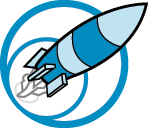Blog Feed
Handbook Emulation
Author Emulation Handbook
Author Emulation - Mo Kelly
The House of the Scorpion Emulation
The Hunger Games Emulation By Justine Koffi
Emulation Handbook
Emulation Handbook
Michal Czapla- Author Emulation Handbook
Emulate your author benchmark
Emulation Handbook-Abel Solomon
Good Omens Author Emulation
Brooklin Johnson-Coles/ Emulation Handbook
Author Emulation
Ethan Chen's Emulate Your Author 1984
My Emulation Handbook: Happy act
https://www.dropbox.com/s/m93flipw3l88wcj/Happy%20Act%20%284%29.pdf?dl=0
Lily's Dog
SLAmbassadors Join Model UN Conference in Torun, Poland
Nemesis Party
Can we afford to trust the federal government giving them full control over everything? A vote for the Nemesis Party is a vote to give the federal government more control over your life. How about the States Govern Party where we can give you the programs that Nemesis Party voters want depending on the state you live in. And since the government is smaller it’s less corrupt and you have more control.
States Govern Party vs. Dreamer's Party
Can we afford a single issue party? The leaders of the Dreamer’s Party believes that Immigration is the number one issue America should focus on. What about the current citizens? How will we keep our families safe if we have a party in office that their whole focus is on getting more immigrants? Even worse they want to slash military funding to pay for more people to protect. Or you can vote for the state’s govern party whereby giving states more rights we are putting citizens first.
3 Strengths Blog - Malcolm McCreary
I am one of few to be able to say confidently that I have a rather strange work ethic. Rather than being able to get something done by just sitting down and really grind through any sort of task, I really prefer to work at it in bursts of energy based on my mood at the time. I can tend to submit things late just because I don’t have all that much motivation to get things done at the time, but I can also crank out a benchmark in a day if I get really committed to the assignment. Probably why this assignment is about a week late, I tend to work flexibly so that whatever I do is to the best of my ability and something I feel confident in doing. That being said, there are some strengths to my work ethic that I’m comfortable explaining.
Creative - I’m well aware this is one of the most basic and overused personality trait anyone can use to describe themselves, but I think I can say all jokes aside that I can think outside of the box a bit and bring some unique ideas to the table. If I start with a good idea for an assignment I can really make it my own and have a blast with whatever’s given to me. This can be both a blessing and a curse as every once in a while I twist the task just a bit so that I don’t always meet requirements just because I have so much fun working on certain creative assignments.
Flexible - This comes in handy primarily with group projects. My approach is that chances are whoever is taking the lead of this assignment probably has a way better idea of what it should look like, and if I work to make that dream a reality it’ll get a pretty decent grade. I do enjoy meeting in the middle and collaborating to make even more elaborate ideas, however, I have no objections to letting partners take over a bit and get better at their own craft. I’ve been working on projects since middle school, so at this point, I’m well aware of what I want isn’t going to be exactly what a group creates.
Resourceful - Now, this is a bit more specific, however when it comes to more creative assignments I tend to instantly have an idea of what I want to do, and what I need to do to make that happen. Pretty much anything that involves storytelling I’ve already had something in the works just sitting back in my subconscious waiting for an opportunity. I love projects, and I love being able to apply everything I know academically to a fun and exciting project.
In conclusion, my work ethic is a bit sloppy, disorganized, and unrefined however if I put my mind to it I can actually put out some pretty cool stuff (so I’m told). I know that if I just do the work this can come to my advantage I the academic field, it just takes me some time getting comfortable in school so that I can consistently use my time to make creative projects and that all starts with time management and self-motivation.
